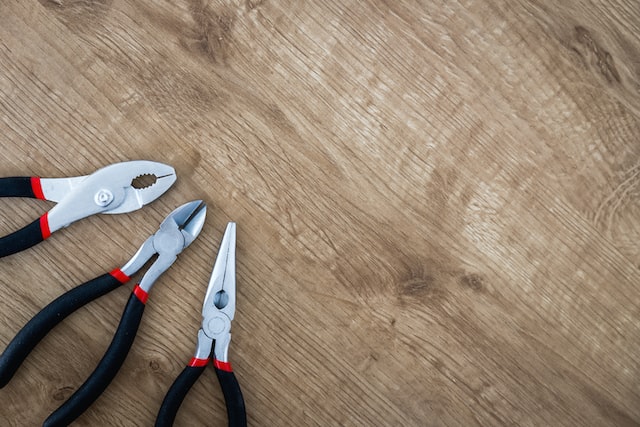A lot of work goes into maintaining a home. From ensuring excellent air quality to keeping the pipes from leaking, most household problems often return to plumbing issues. As for the rest, they’re often related to other factors, such as weather damage or old age. Although you can hire professionals, some might be confident in their mechanical skills. Because instead of hiring someone, they’d much rather do it themselves, especially if the problems are manageable. Yet you can’t do that without your home toolkit.
A home toolkit includes all the tools they need to do repairs. But it doesn’t hurt to own one for doing arts-and-crafts projects. No matter where you use it, one of the tools you need is a pair of pliers. Those unfamiliar might assume there’s only one type of plier in the market. What they don’t know is that there’s a variety available.
Here’s how to choose the best pliers for any purpose you have:
Best For Grip – Parallel Pliers
Keeping materials stationary prevents them from getting jostled, even when moved around. It’s crucial for projects or repairs that demand precision when two or more materials are already measured, but no adhesive has been applied yet. Fortunately, there are pliers designed for grip.
Maun Industries say the best type of pliers for grip is parallel pliers. That’s because they use a box joint system that lets the jaws close in parallel to each other, which avoids the pinch point that other types of pliers create, and so allow you to get a good grip on something without crushing it.
Using parallel pliers as an example, pliers used for grip are designed to have an adjustable pair of jaws. Once you’ve adjusted the jaws, a mechanism holds them closed, which stays like that until you release it. This way, they can clamp on materials despite their width. For better leverage, serrated jaws are preferable.
Best For Cutting – Lineman’s Pliers
Aside from gripping materials, a pair of pliers is also used for cutting materials. Since some of them roughly have similar structures to a pair of scissors, using them is straightforward. Yet, for those looking for the best cutting pliers, consider looking into lineman’s pliers.
Given their name, it’s rare to see an electrician without lineman’s pliers. After all, they’re designed to endure heavy-duty use. Their double-sided cutting edges can cut all types of wire and even soft metal. On top of that, they feature serrated jaws that enable them to grip materials.
But as ideal as they are for cutting, it’s unadvisable to use lineman’s pliers on thick, narrow materials, particularly nails or threaded bolts. Otherwise, they’d dull down the jaws. On top of that, even though they’re padded with plastic or rubber, it’s not thick enough to protect the user from powerful electric currents. So, it’s best not to use them on a live electrical system.
Best For Versatility – Slip-Joint Pliers
At some point, most people might have gotten the idea that there’s only one type of plier because of slip-joint pliers. After all, they’re designed for all sorts of purposes, particularly gripping, cutting, bending, and more. That’s why they’re found in toolkits in many households.
From the untrained eye, some believe there’s no difference between lineman’s and slip-joint pliers with how similar their serrated jaws are. But what makes slip-joint pliers excel in versatility is the curved area at the back of the jaw near the pivot point. Because of this curved area, it’s much easier to grip rounded objects like pipes or rods. Common toilet repairs can be accomplished with this plier, that’s for sure.
Best For Speciality – Fencing Pliers
Although most pliers roughly have similar jaw designs, some pliers that fall under ‘special’ purposes often have distinct features that set them apart from what’s found in toolkits. Because aside from gripping and cutting, specialty pliers can perform tasks that you least expect them to. The best example of this is fencing pliers.
Right off the bat, fencing pliers feature a unique jaw vaguely shaped after a hammer. However, this design isn’t only aesthetic; the ‘hammer’ jaw is for hammering nails and staples. It’s complete with a spike jutted out at the top to pull them out. Inside the jaw, there’s enough space to grab and twist wire. Hence, it’s safe to say that fencing pliers are suitable for those planning to work on putting up fences along the yard.
Takeaway
Pliers must be a constant in home toolkits. After all, there’s no tool better at grabbing and cutting than them. However, many assume that only one standard plier is available. But once they arrive at a hardware store to buy a pair, they might get overwhelmed by how many types of pliers there are. Fortunately, each type features characteristics that fulfil a specific task. Knowing the best one for what you have in mind is only a matter of knowing it.

